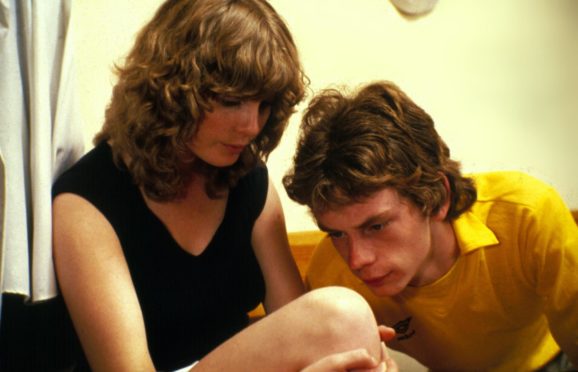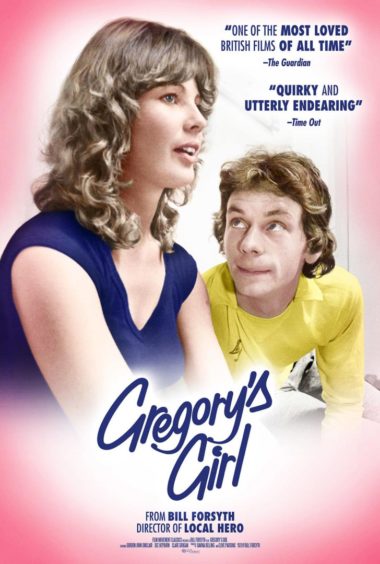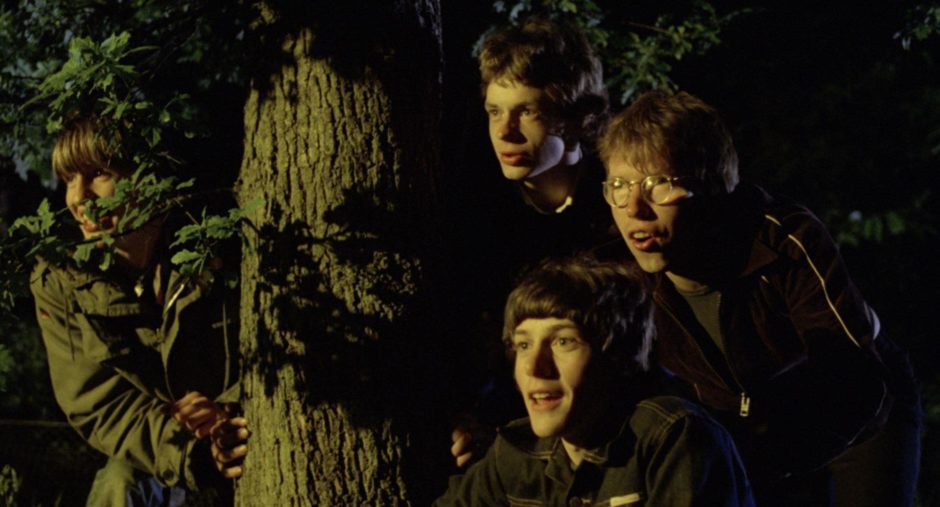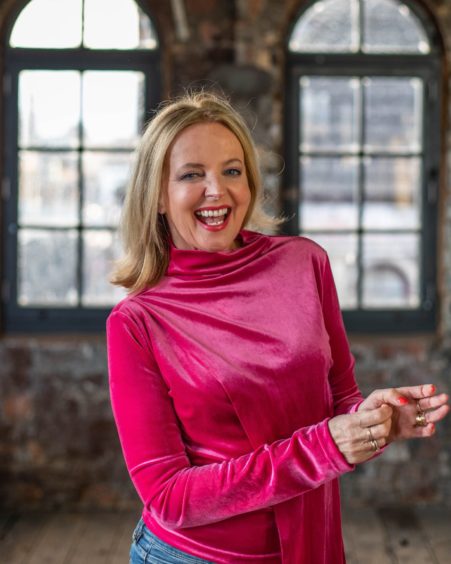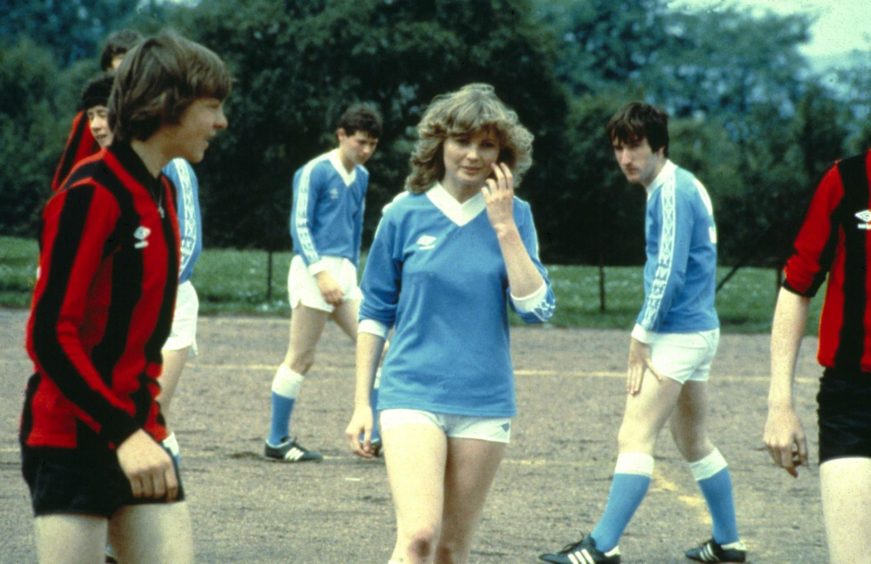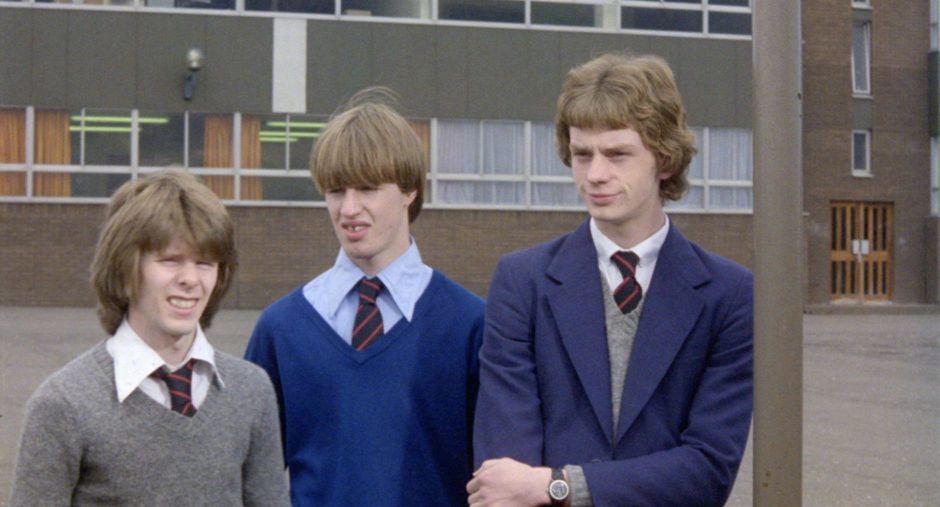It was one of the most treasured films of the 1980s; a production whose loving craft and memorable script transcended its shoestring budget and often down-to-earth west of Scotland settings.
Even now, 40 years after Gregory’s Girl was released on April 23 1981, there are movie buffs who regard it as a trailblazing work, whose roots in pawky humour and rites-of-passage angst inspired all manner of subsequent releases from Trainspotting to Bend It Like Beckham.
When the late movie critic Barry Norman visited the Belmont in Aberdeen a decade ago, he spoke of how he thought Bill Forsyth was one of the most influential, original voices who had ever worked in the British film industry.
And although he admitted: “I couldn’t understand some of the cast’s accents”, he was among those who were captivated by the plot as it twisted and turned and concluded: “You walk out at the end with a big smile on your face”.
North-east director Jon S Baird, summed up its enduring impact this week when he said: “Gregory’s Girl’ was a huge film for my generation and it is one of the most quotable pieces of Scottish culture.
“I would love to see a sequel where [the characters of] Clare Grogan and John Gordon Sinclair reconnect on social media as long lost friends.”
Magic emerged from modest beginnings
In other hands, the film could have developed into just another romantic pot-boiler, but Forsyth, who wrote the script and directed his largely young, unknown cast, managed to weave a unique story of teenage love and adolescent infatuation with a football background and a cast of dreamers.
It relates the trials and tribulations of Gregory Underwood, played by Sinclair, the awkward, gangly teenager who performs for his struggling school team and is replaced by Dee Hepburn’s Dorothy, whom, despite the coach’s sexist misgivings, turns out to be a stellar talent in the striking stakes.
But although she quickly snaffles Gregory’s role as centre forward, while the eponymous hero replaces his friend Andy between the sticks, there are no easy solutions to these characters’ various issues, on and off the pitch.
That’s what makes the film so compelling: the myriad unexpected and very human dilemmas in which the youngsters regularly find themselves.
No expense was too little for the producers
Many of the actors taking centre stage were members of Glasgow Youth Theatre, and had appeared in Forsyth’s earlier film That Sinking Feeling, including Robert Buchanan, Billy Greenlees, and John Gordon Sinclair.
Hepburn was given six weeks of intensive football training at Partick Thistle and burst into the limelight when the movie was unveiled, but she was disinclined to be branded as a blonde bombshell. On the contrary, and long before the birth of the #MeToo movement, she was determined to keep her kit on and rebuffed those in the industry who sought the alternative.
Grogan, for her part, enjoyed pop stardom with the band Altered Images, but also kept her feet firmly on the ground. Whether travelling to Tinseltown or singing Happy Birthday on Top of the Pops, she made it clear she was enjoying herself, but refusing to be typecast or limited in her ambitions.
And that individuality and idiosyncratic streak from the protagonists was one of the many reasons behind the movie’s enduring success.
Necessity was the mother of invention
Forsyth later attracted Hollywood legend Burt Lancaster to headline his award-winning Local Hero in 1983, but resourcefully relied on making a little go a very long way throughout the shooting schedule for Gregory’s Girl.
The filming of many of the exterior scenes took place at Abronhill High School in Cumbernauld.
The actors supplied a lot of their own clothes, with Hepburn’s distinctive white shorts borrowed from her sister.
There were no frills on any of the key players. Grogan was waitressing in the Spaghetti Factory in Glasgow when one of the customers – Forsyth – asked her if she was interested in a part in a film he was hoping to make.
Her response was: “I was like, whatever. I definitely wasn’t giving him my phone number. I said: ‘If you want me, you know where to find me.”
Clare nearly didn’t appear in the film
Even after the 18-year-old had taken the plunge and agreed to join the cast, her plans were almost derailed when she was struck in the face by a bottle during a pub fight shortly before the cameras started rolling.
Forsyth had to question whether to re-cast Clare’s part, but he persevered with her, even though she had to be filmed almost entirely in profile so the scars from the aforementioned bar stramash weren’t obvious to the audience.
Yet, somehow, these problems merely added to the mystique which surrounded the film. In the 80s, you had such famous – and much-copied – lines as “Nobody puts baby in the corner” from Dirty Dancing and the notorious “Greed is good” message spouted by Gordon Gekko in Wall Street.
But Gregory’s Girl was the catalyst for another now unforgettable moment: the lying-down-dancing scene featuring Grogan and Sinclair, which artfully blends innocence with humour and a few ounces of teenage lust.
Nobody was expecting too much when the trailers and pre-publicity were followed by the unveiling of the low-budget creation four decades ago.
But the chemistry between the cast – which also featured the legendary Scottish comedian Chic Murray and future Taggart and Two Doors Down star Alex Norton – was obvious from the outset.
And the reviews indicated just how much the production team, inspired by Fosyth, had collaborated in something special, something truly magical.
The critics’ Gregorian chant of approval
If there was any doubt that Forsyth and his compatriots had produced a diamond in unlikely circumstances, they were swiftly dispelled by the critics, who acclaimed the universal themes and (painful) laughs in the film.
The renowned Roger Ebert described it as “a charming, innocent, and very funny little movie about the weird kid. The movie contains so much wisdom about being alive and teenage and vulnerable that maybe it would even be painful for any teenager to see it.
“Maybe, only grown-ups should go and see this movie. You know, people who have gotten over the pains of unrequited love (hollow laugh).”
Variety magazine relished the work of the young cast and the direction, and wrote: “Film-maker Forsyth, whose friendly, unmalicious approach recalls that of Rene Clair, is concerned with young students (in particular, a soccer team goalie, Gregory) who are seeking out the opposite sex.
“As Gregory, John Gordon Sinclair is adept at physical comedy. Hepburn is properly enigmatic as the object of his desire, with an ensemble approach giving his precocious 10-year-old sister played by Allison Forster a key role.”
The viewing public were equally enthusiastic and flocked to cinemas to empathise, laugh and occasionally shudder at recognising the awkward, fumbling scenes of courtship in a school setting.
Perhaps they most appreciated the sentiments which were embodied in a glowing critique by political activist and movie fanatic Richard Skorman.
He said: “Bill Forsyth does an excellent job of making light of the tender part in [Gregory’s] teenage psyche, and his friends and little sister in particular are quirky and lovable.
“Unlike the film’s American counterparts, Gregory’s Girl is refreshingly free of mean-spirited characters and horny young studs.”
That is every bit as true in 2021 as it was in 1981.
The main cast members reunited 30 years later
While Forsyth is probably best known for Local Hero – and his talents as both writer and director have been feted throughout the globe – his cast members admitted they never expected Gregory’s Girl to be such a phenomenon.
When Sinclair finally saw the finished product at the 1981 London film festival, he was “mortified” and thought he looked terrible and gangly and was initially apprehensive that his performance might have “ruined the film”.
But when he and other cast members were reunited 30 years later, Sinclair, who is now an author and appeared in the recent TV thriller Traces, which was partially shot in Dundee, was understandably proud of the film.
He recalled: “The chemistry between myself and Clare was real. We’ve been friends ever since. Clare was into bands and was always heading off to London. She was incredibly cool, whereas I was in a combat jacket with long hair, listening to Rush.
“I especially remember the scene after our date in the park, where there is a shot of us walking off into the sunset. We were both in tears. It was the last day of filming. This magical bubble we had been in was about to burst.”
Clare has also become a successful author
Within a few months of the release of the film, Clare Grogan was touring with Altered Images and enjoying huge chart success with the band.
But while she has thrived in different sectors of the arts and has become a popular children’s author, the Gregorian chant still resounds.
As she said: “It was just so pivotal in my life. Everywhere I go, all round the world, I always find myself in the company of somebody who loves it, and that is an amazing thing.”
